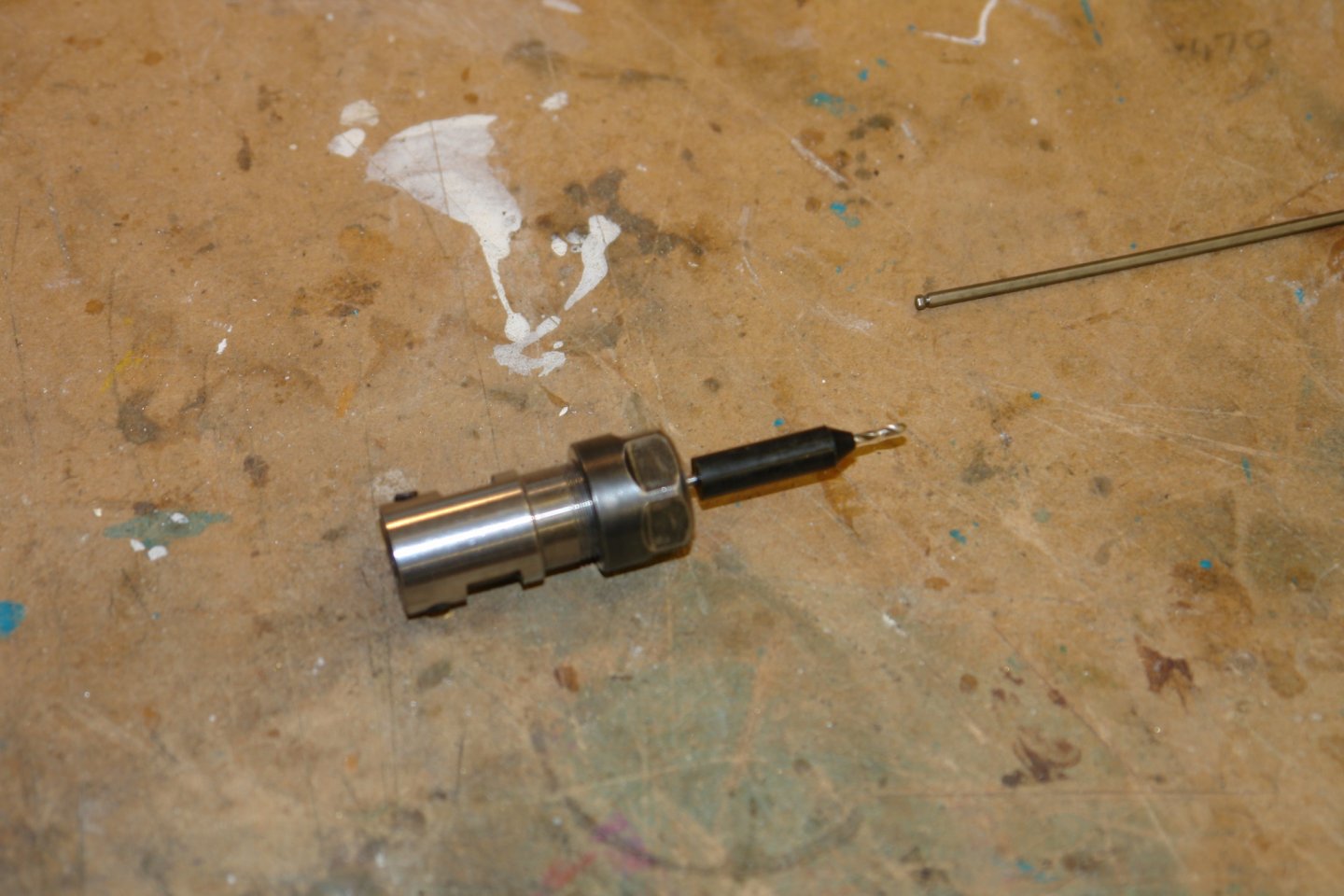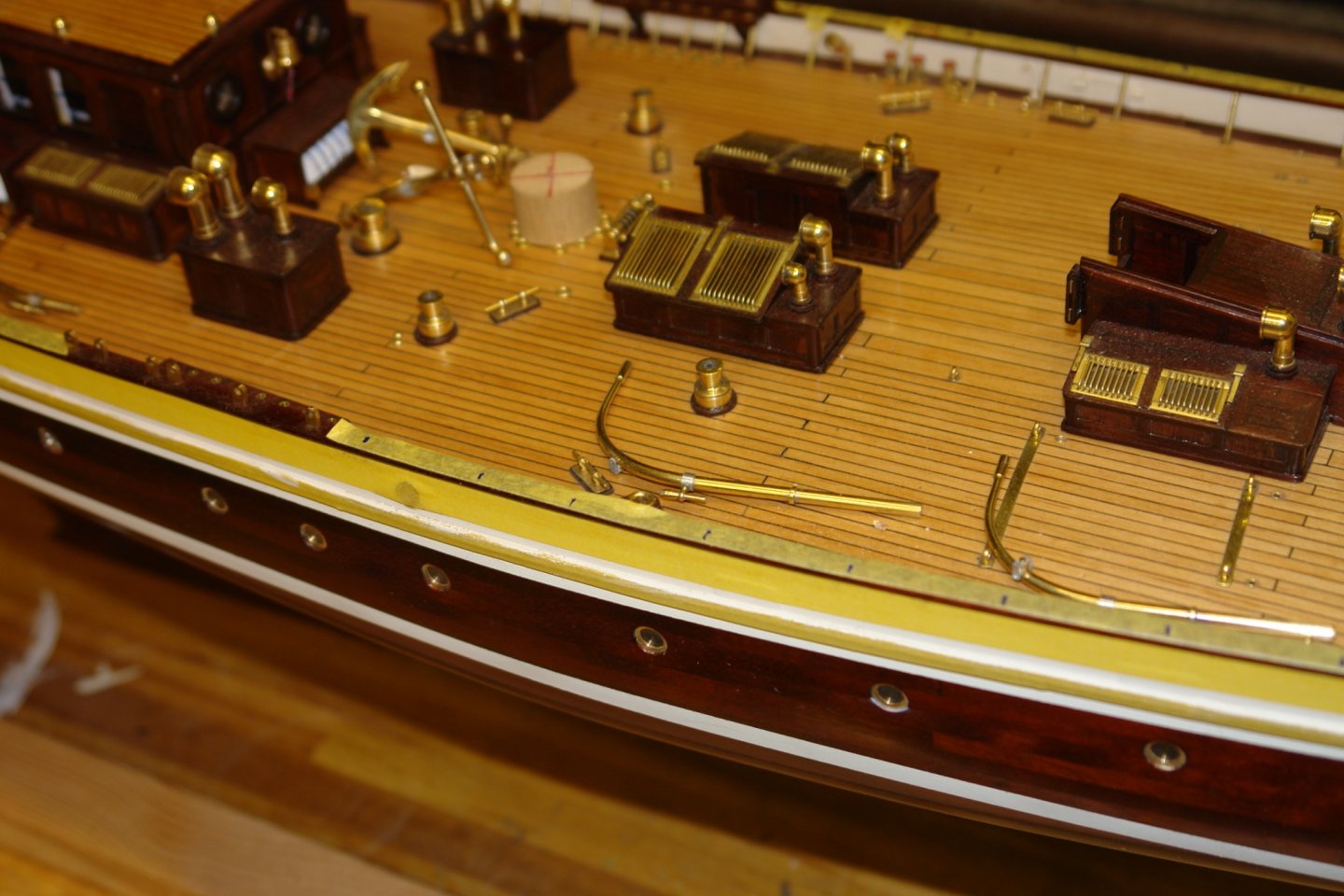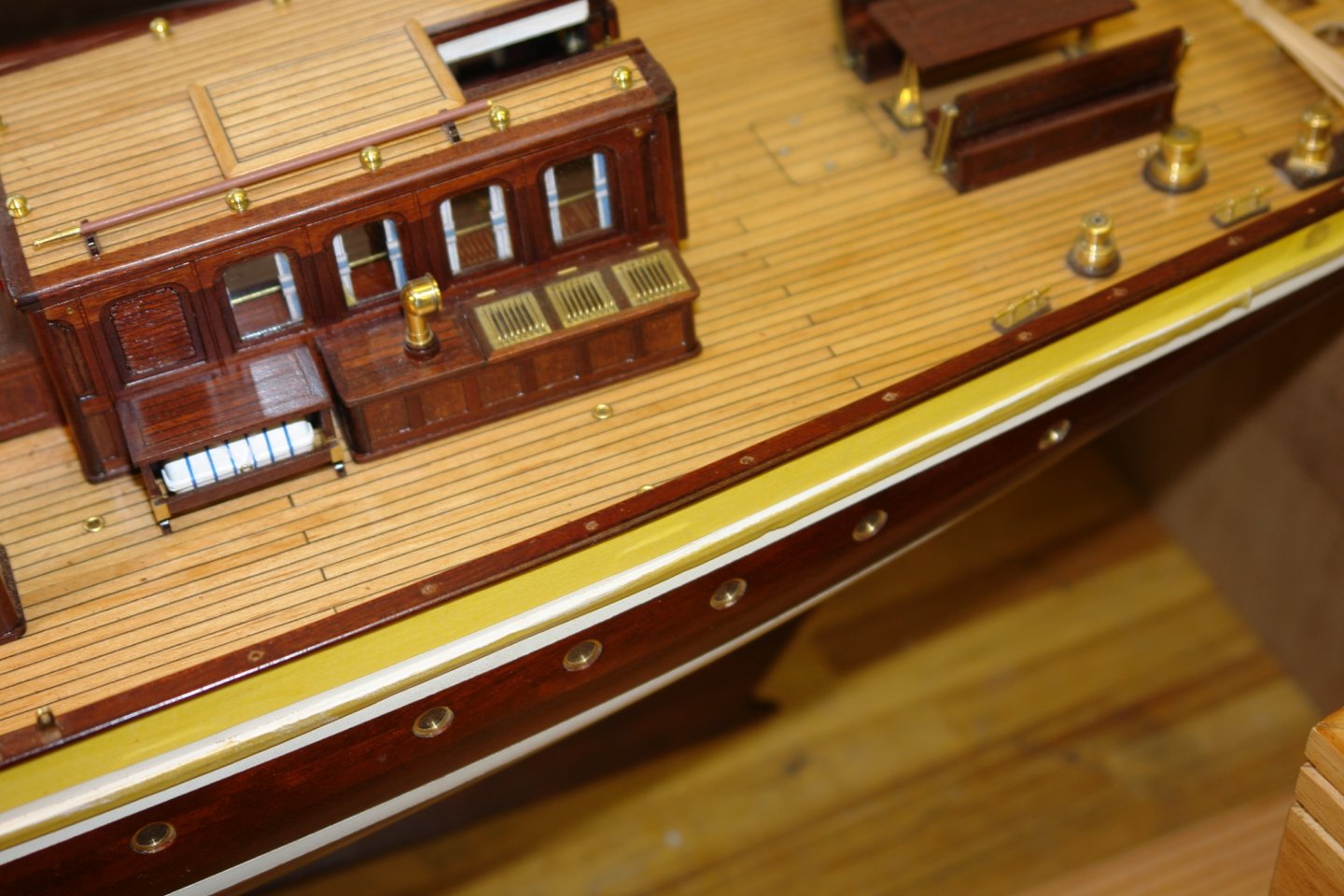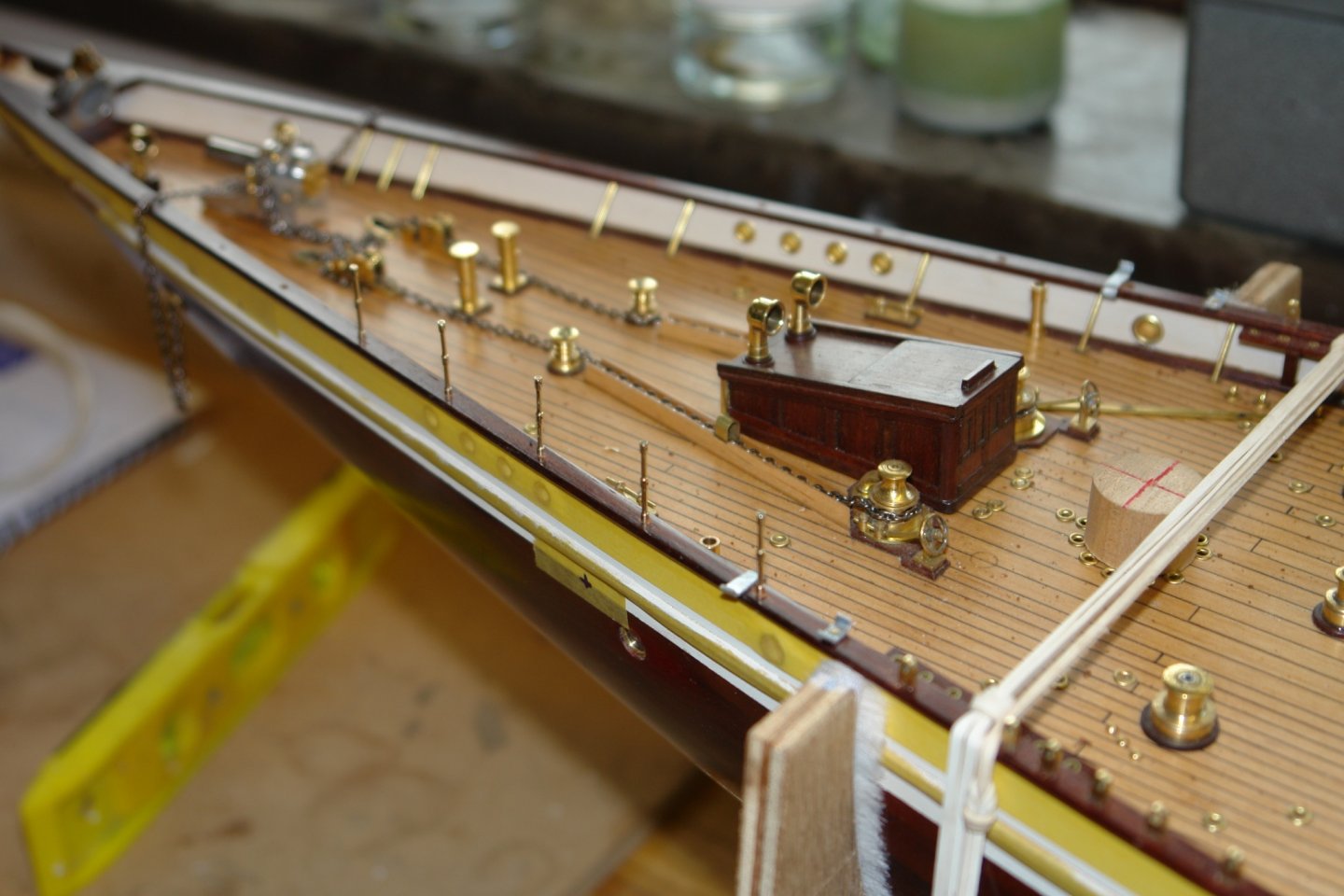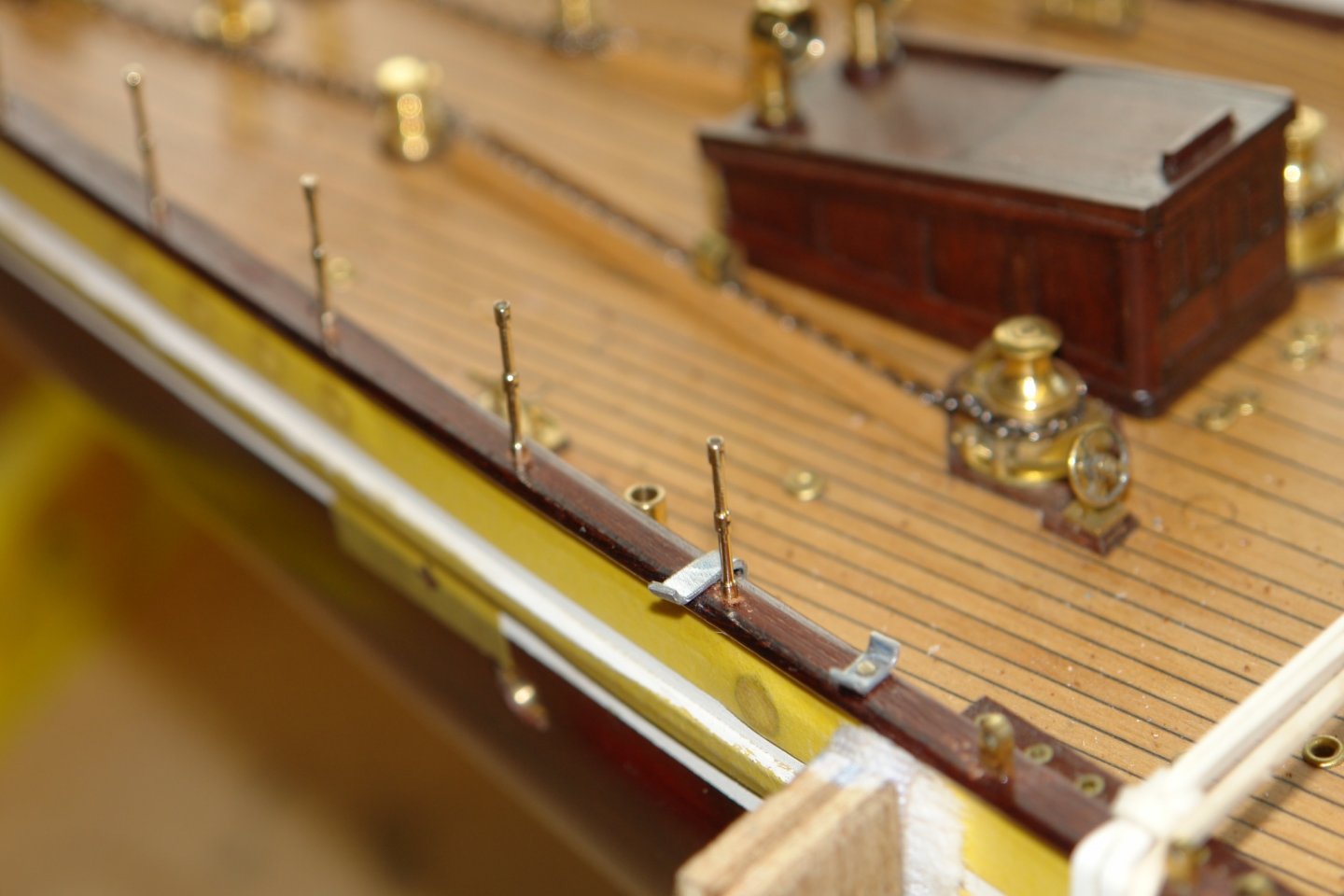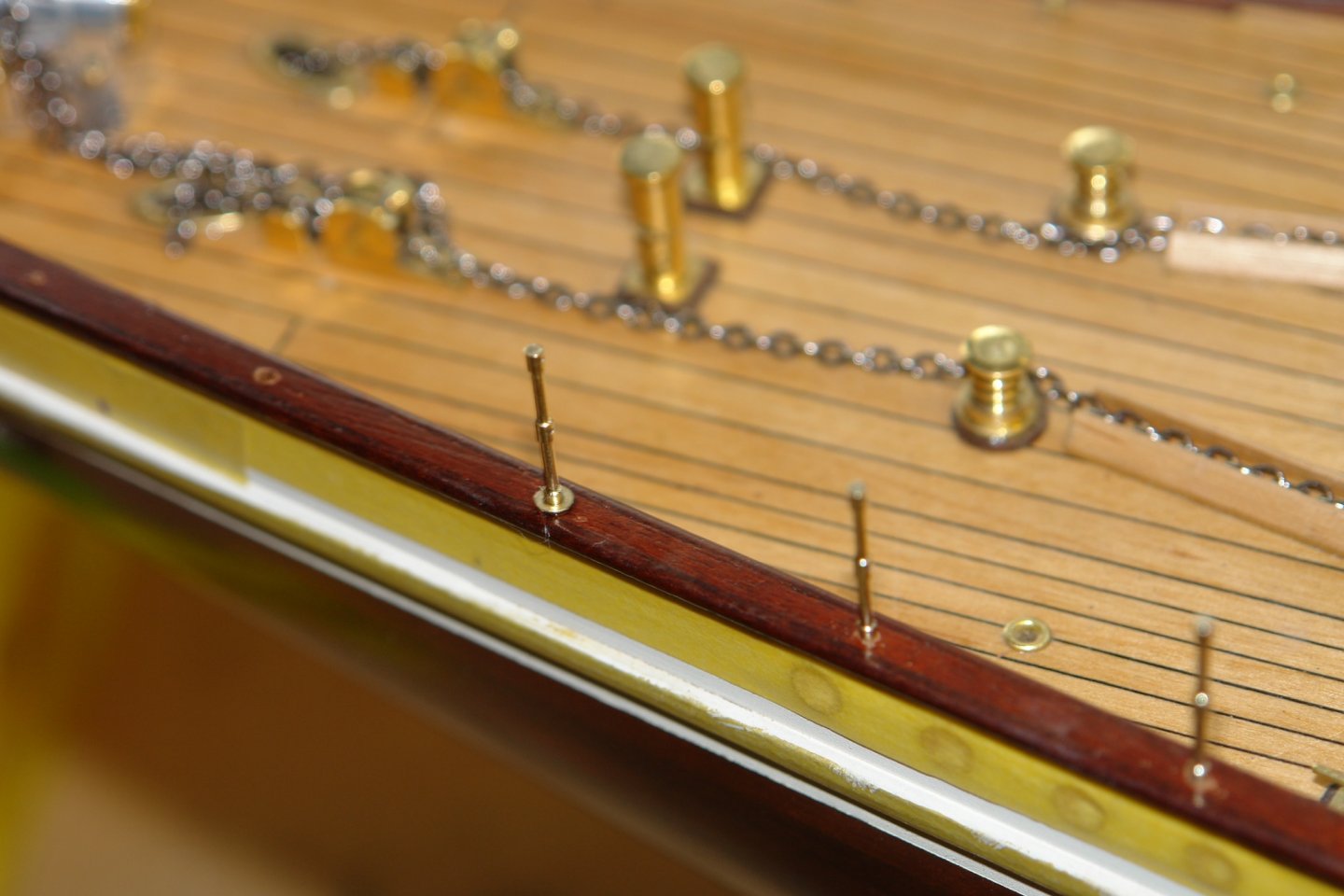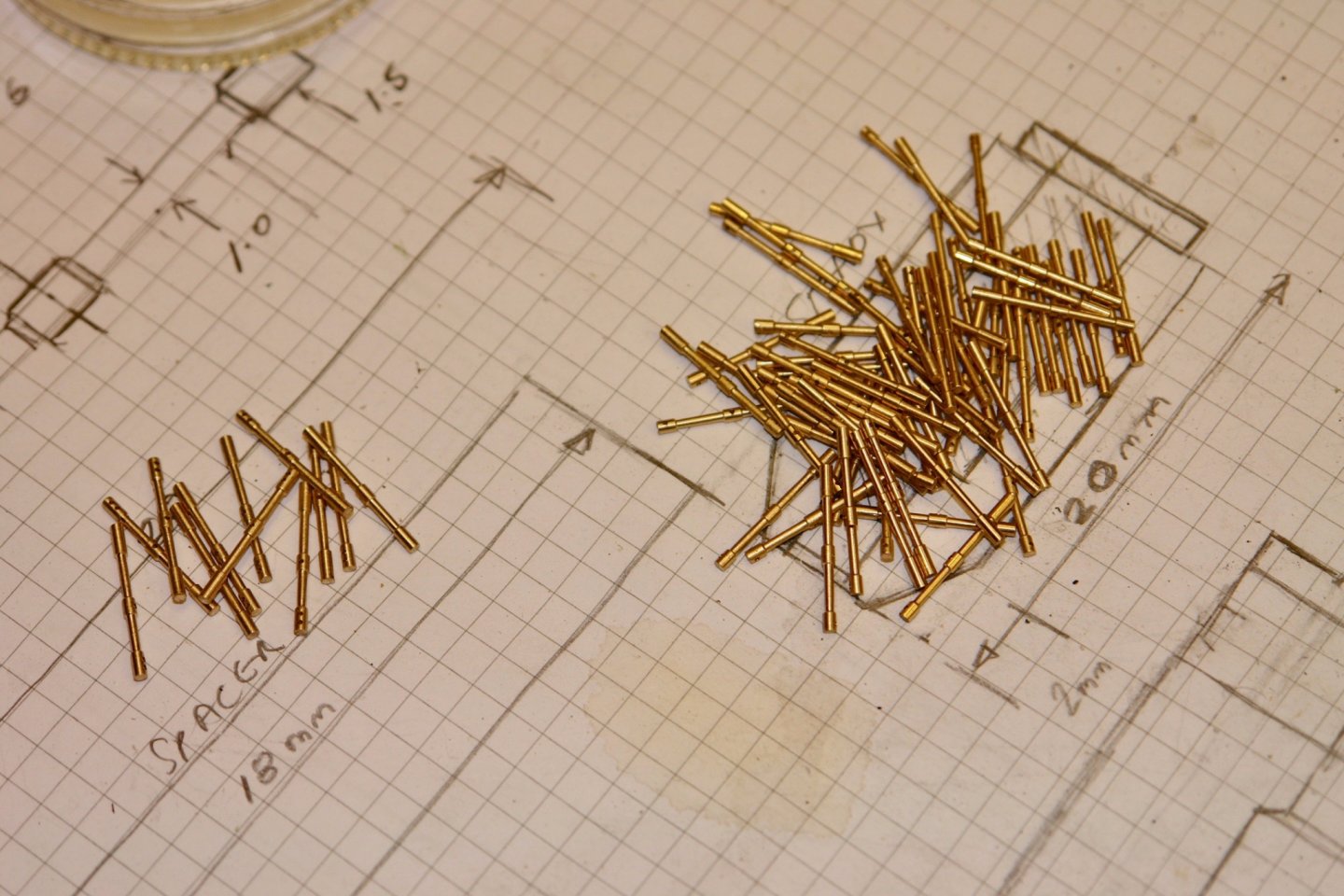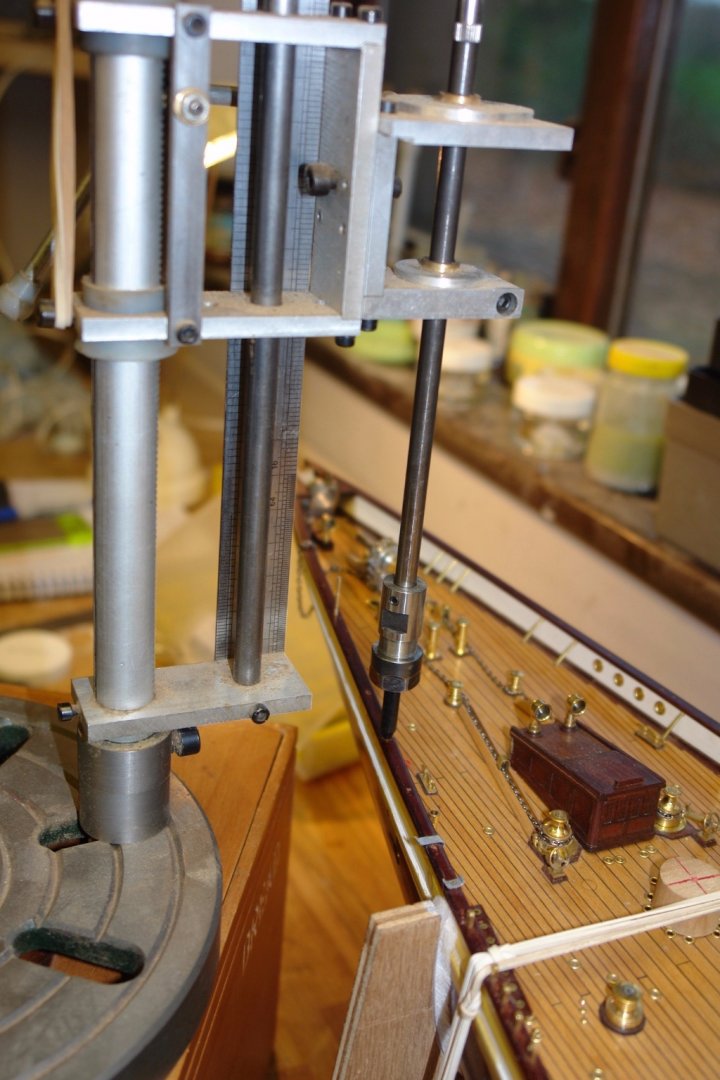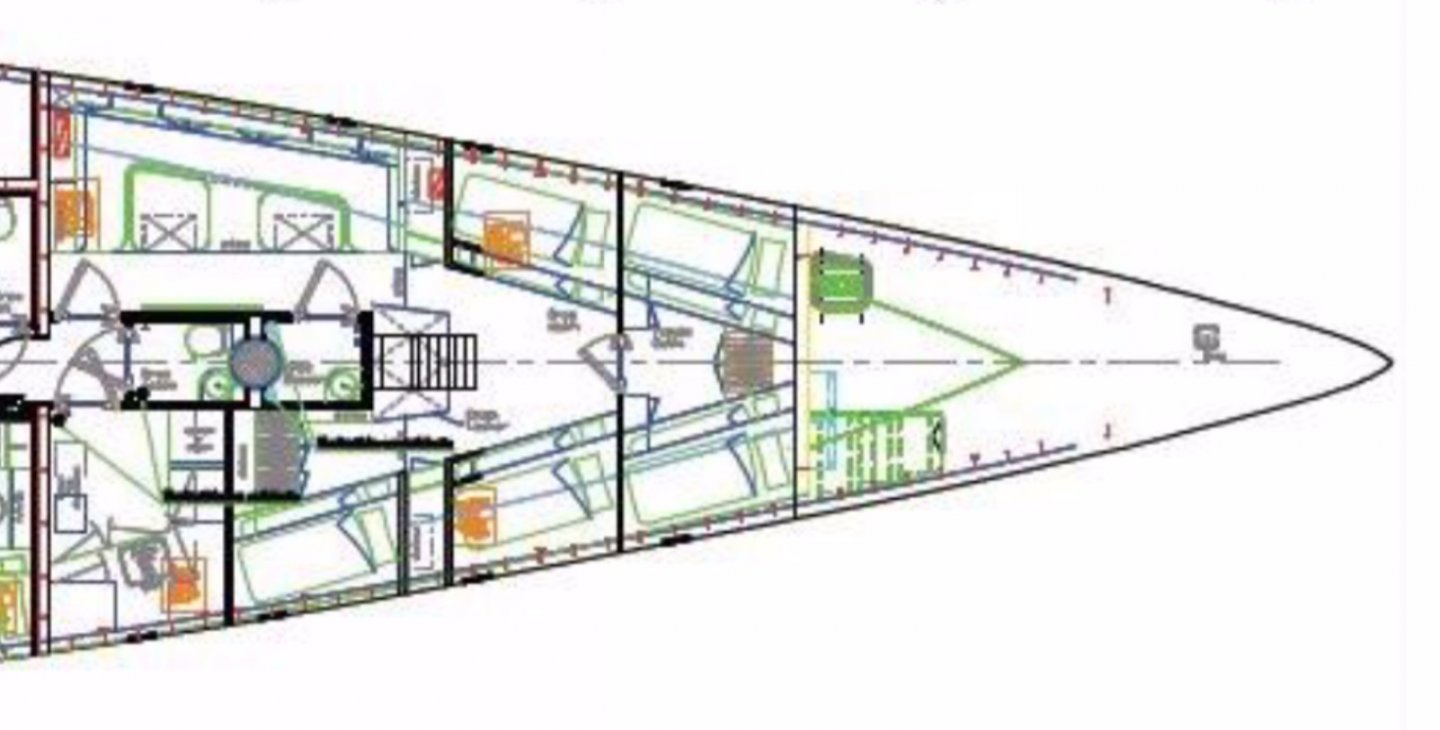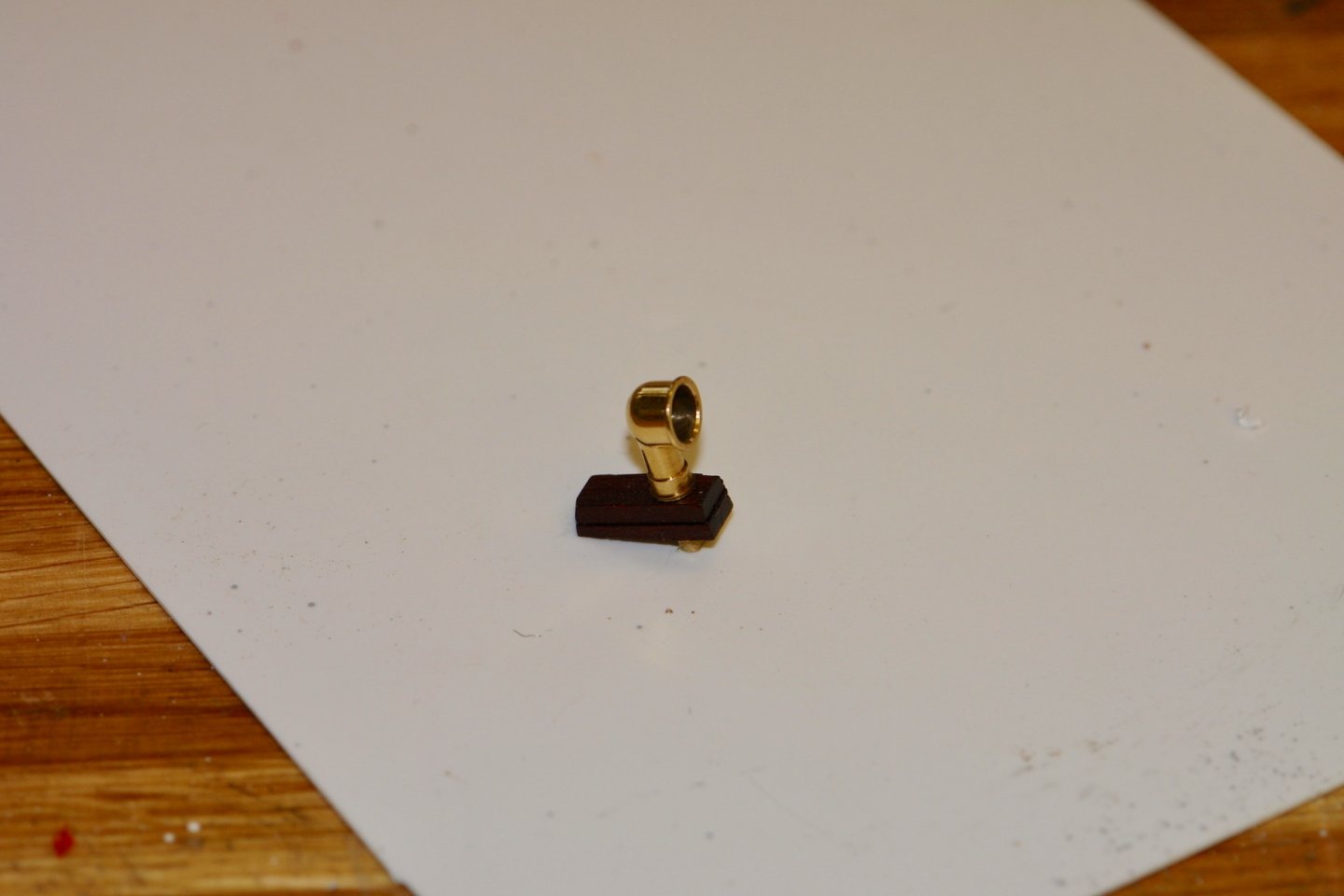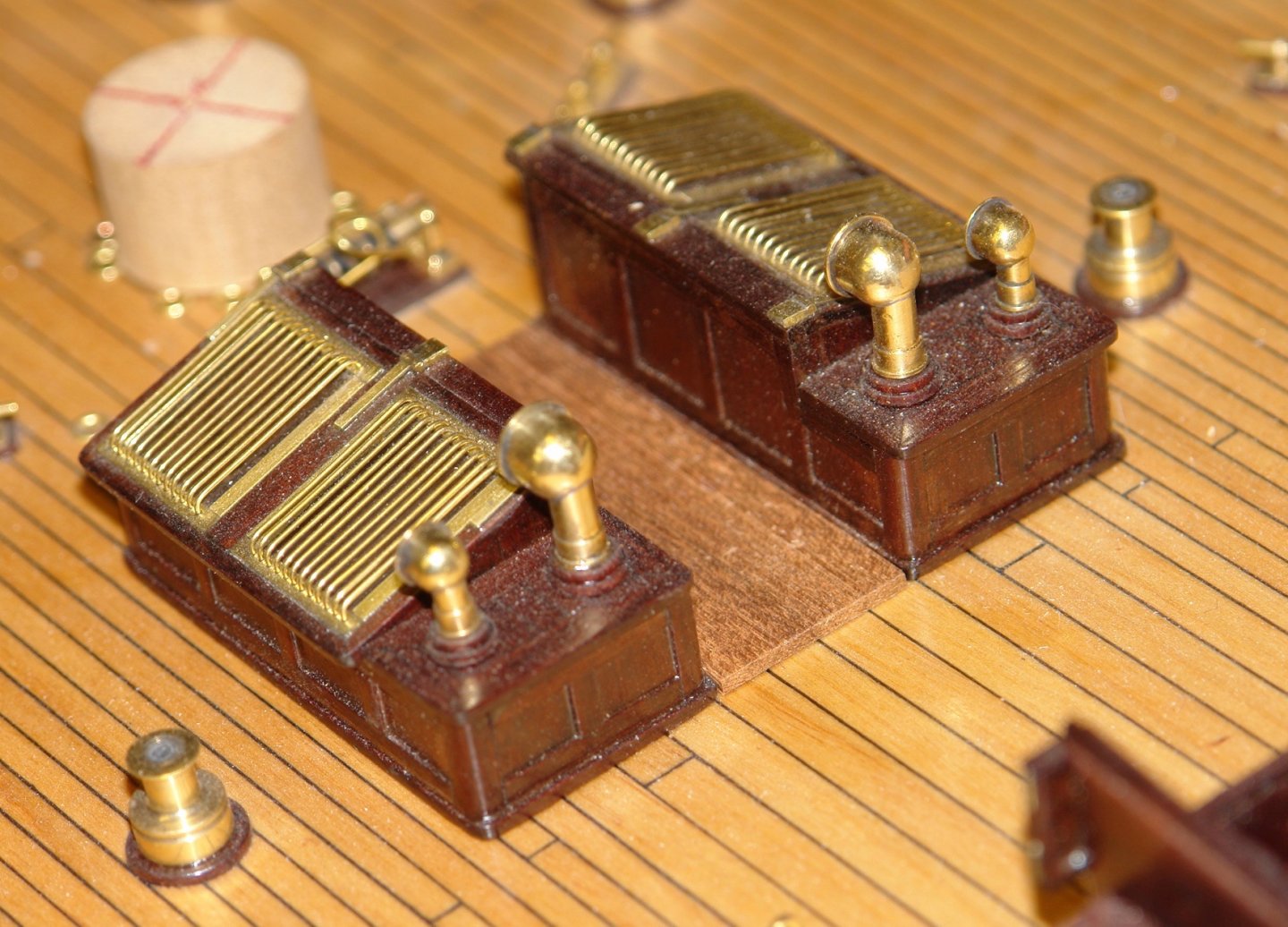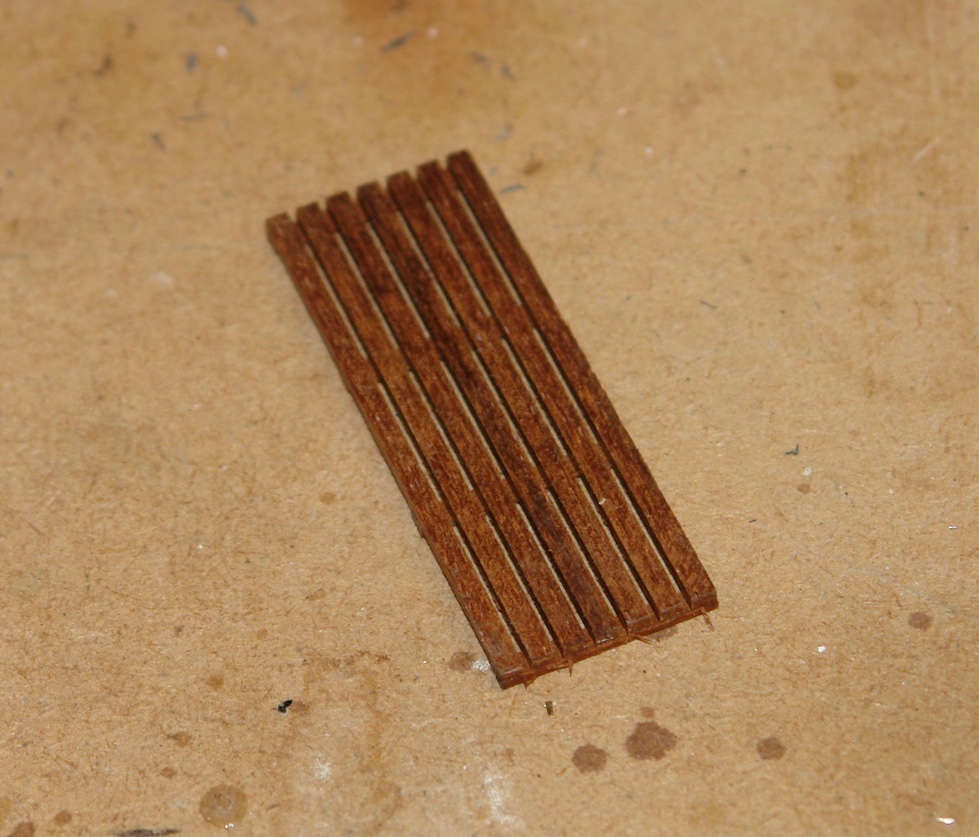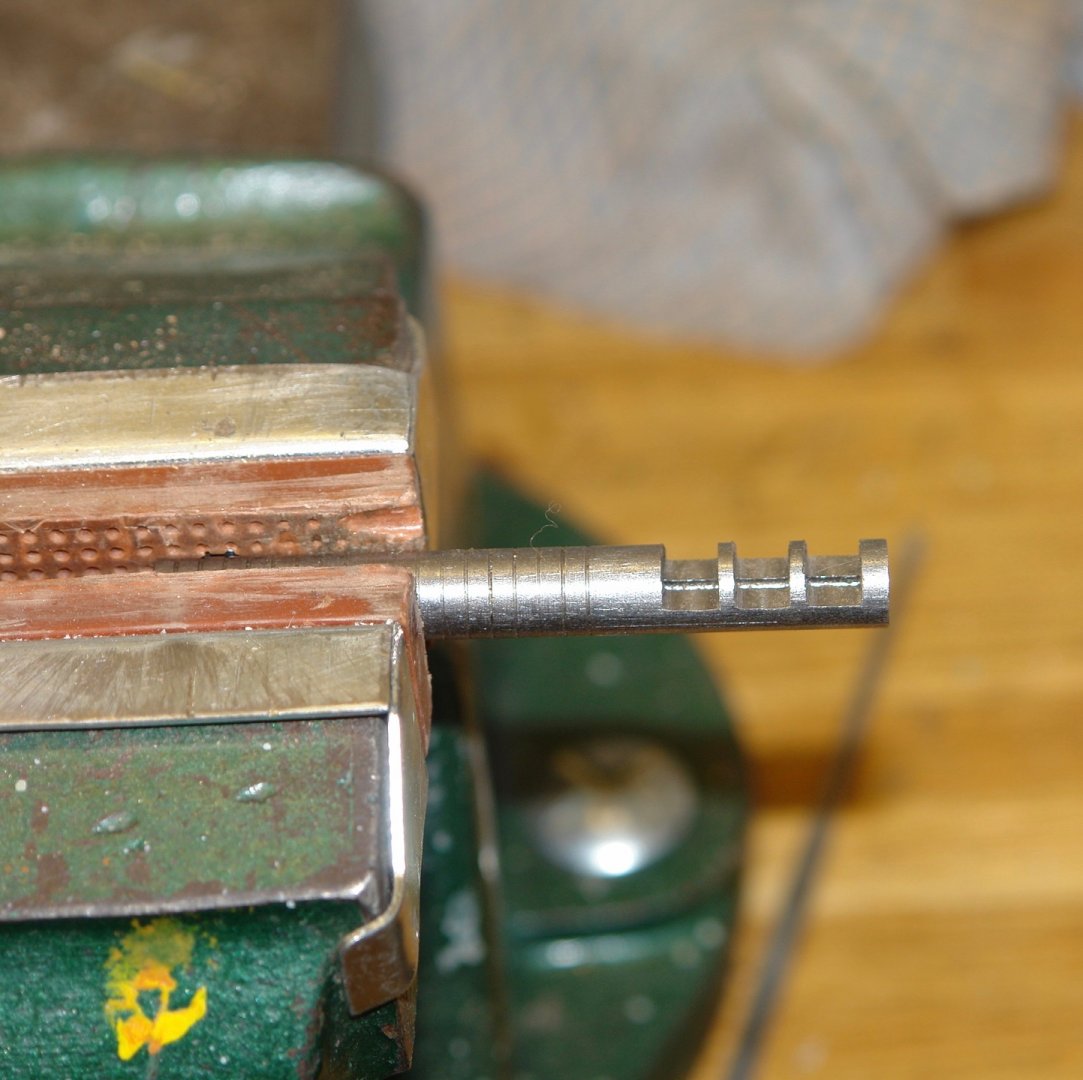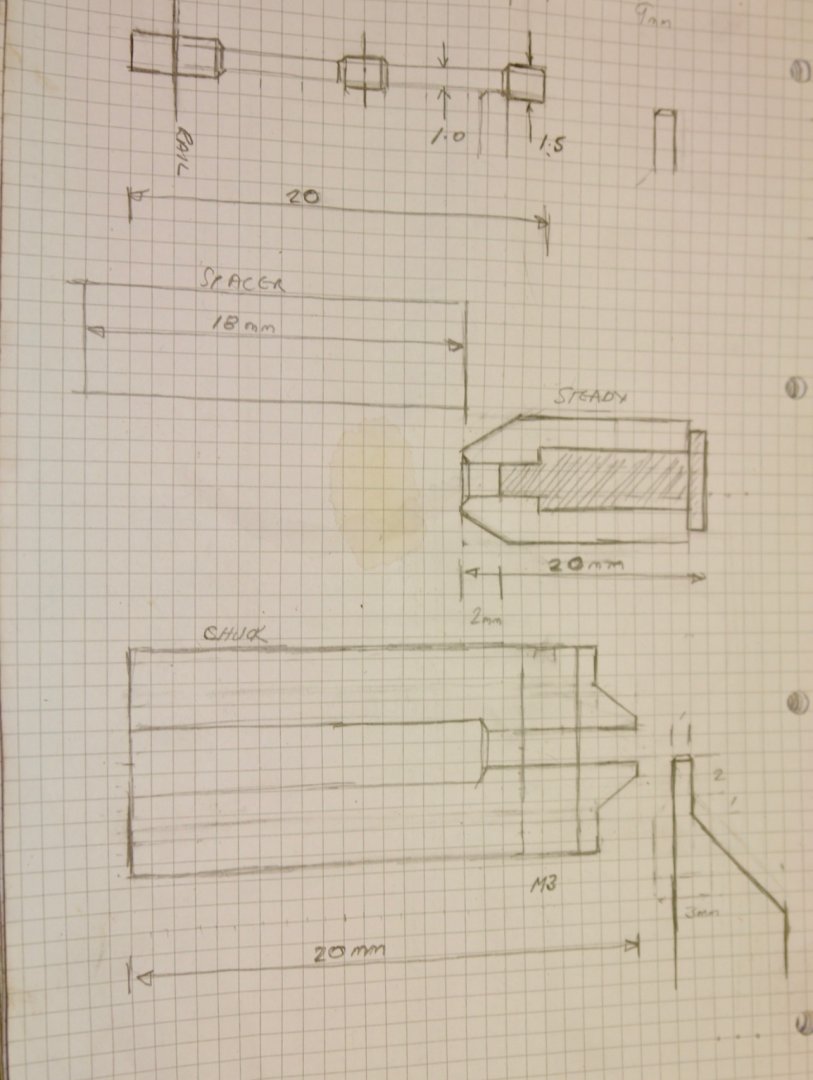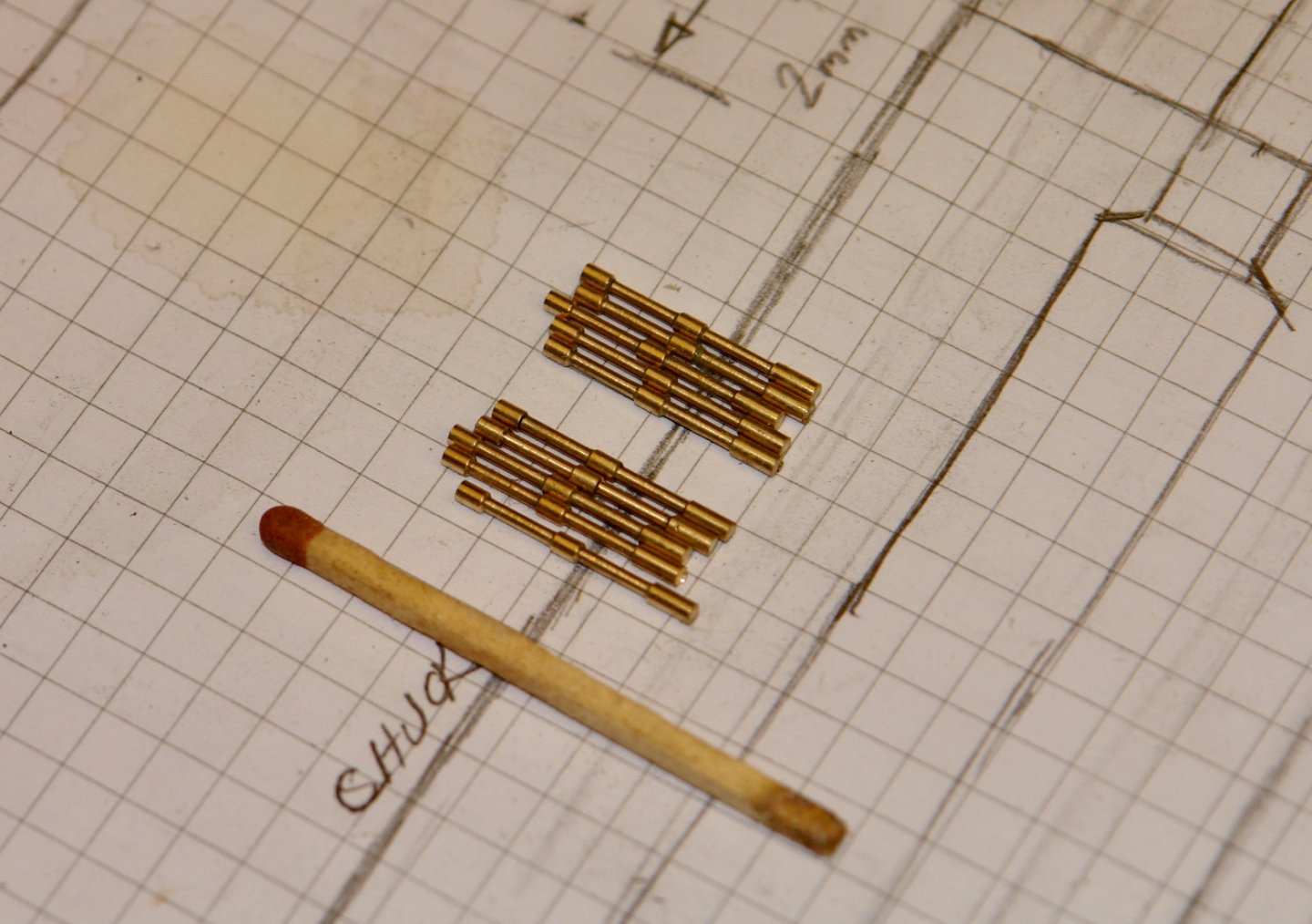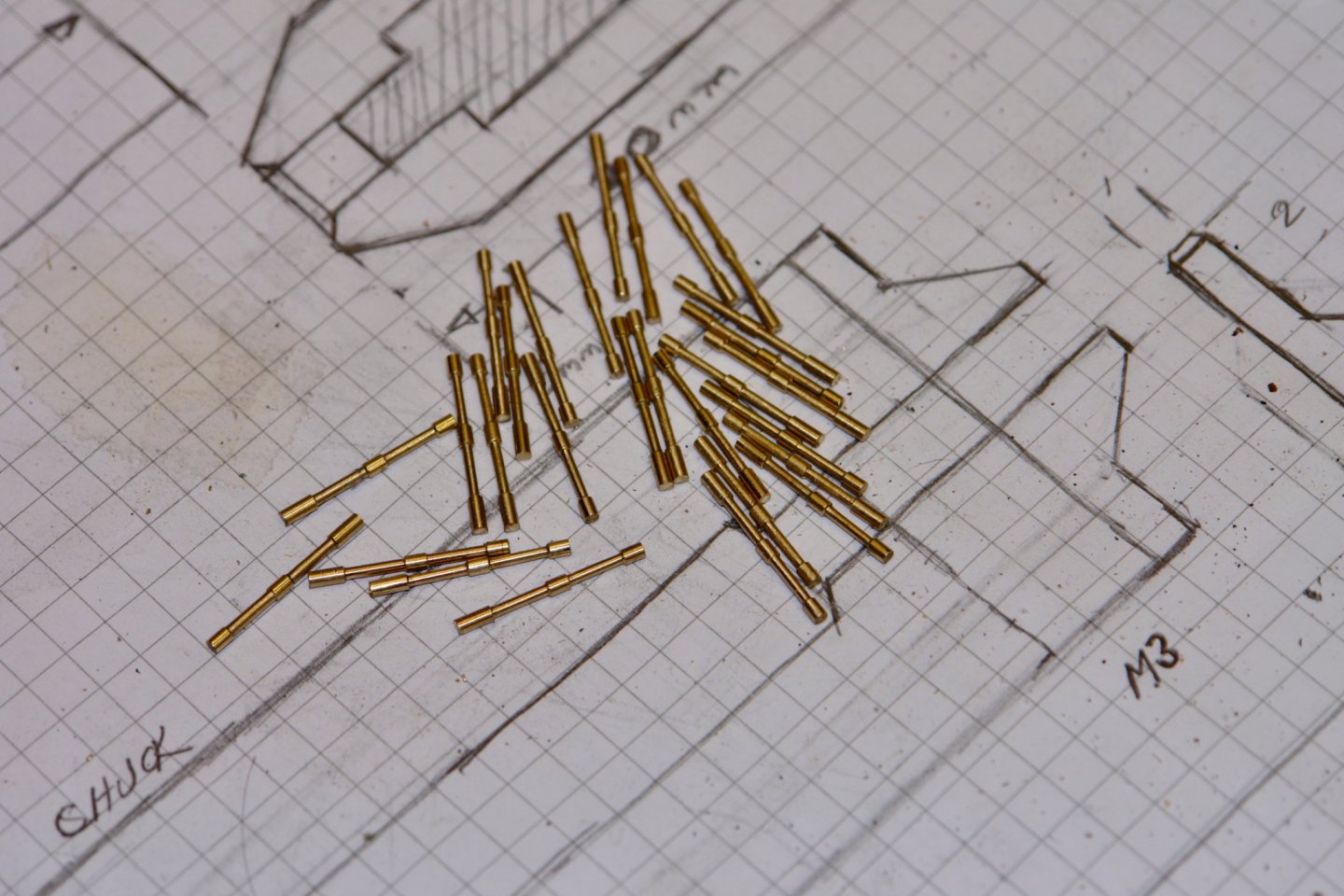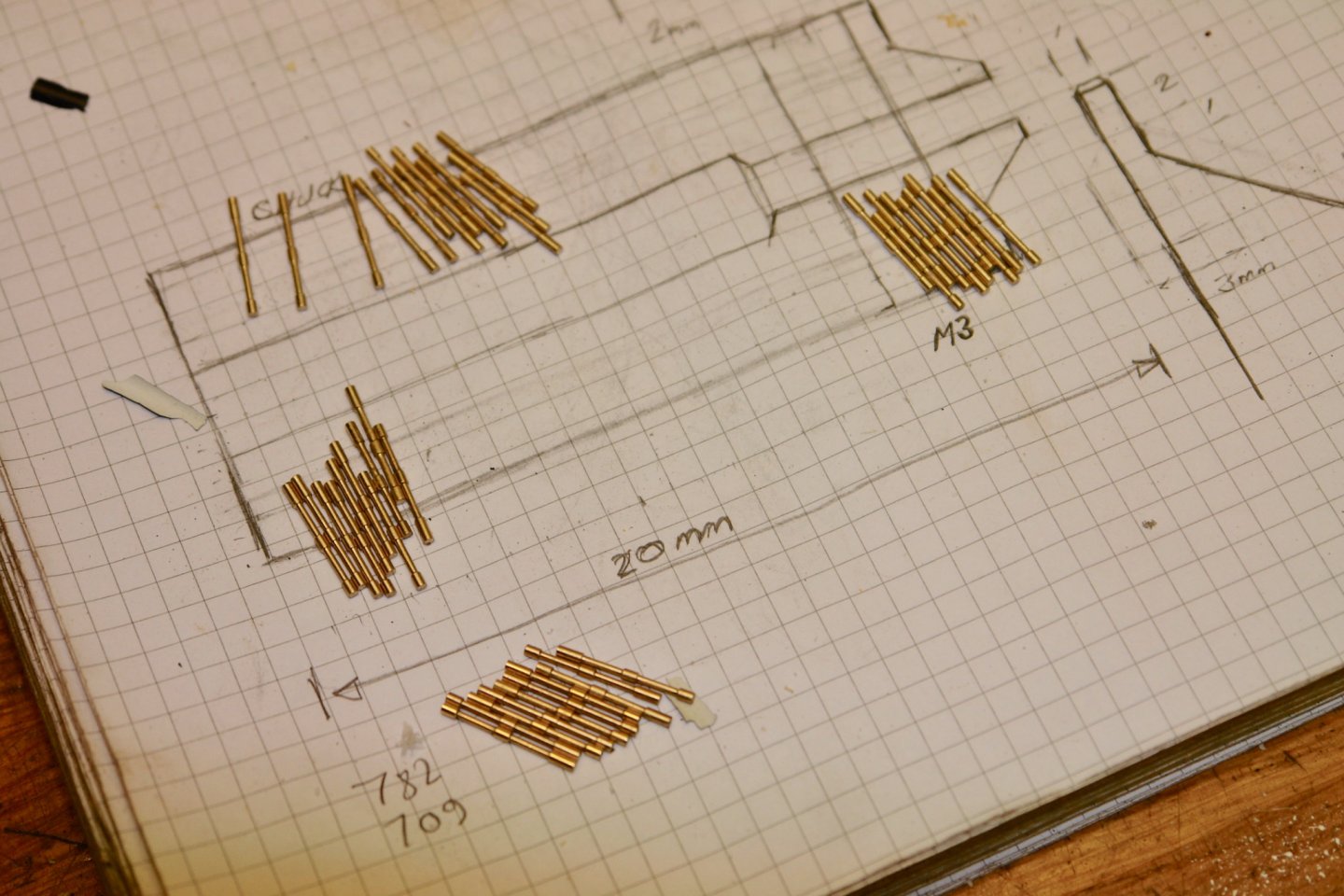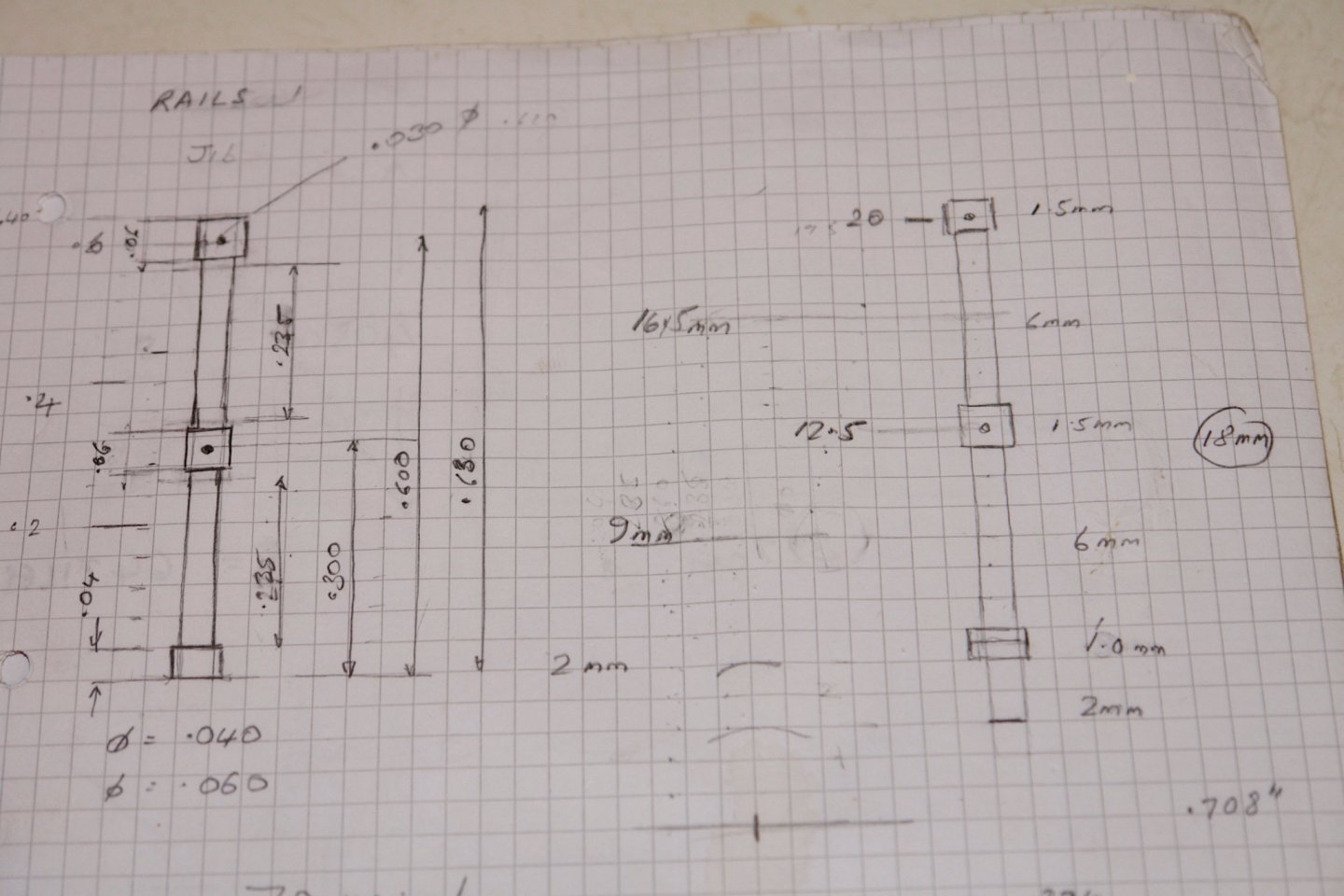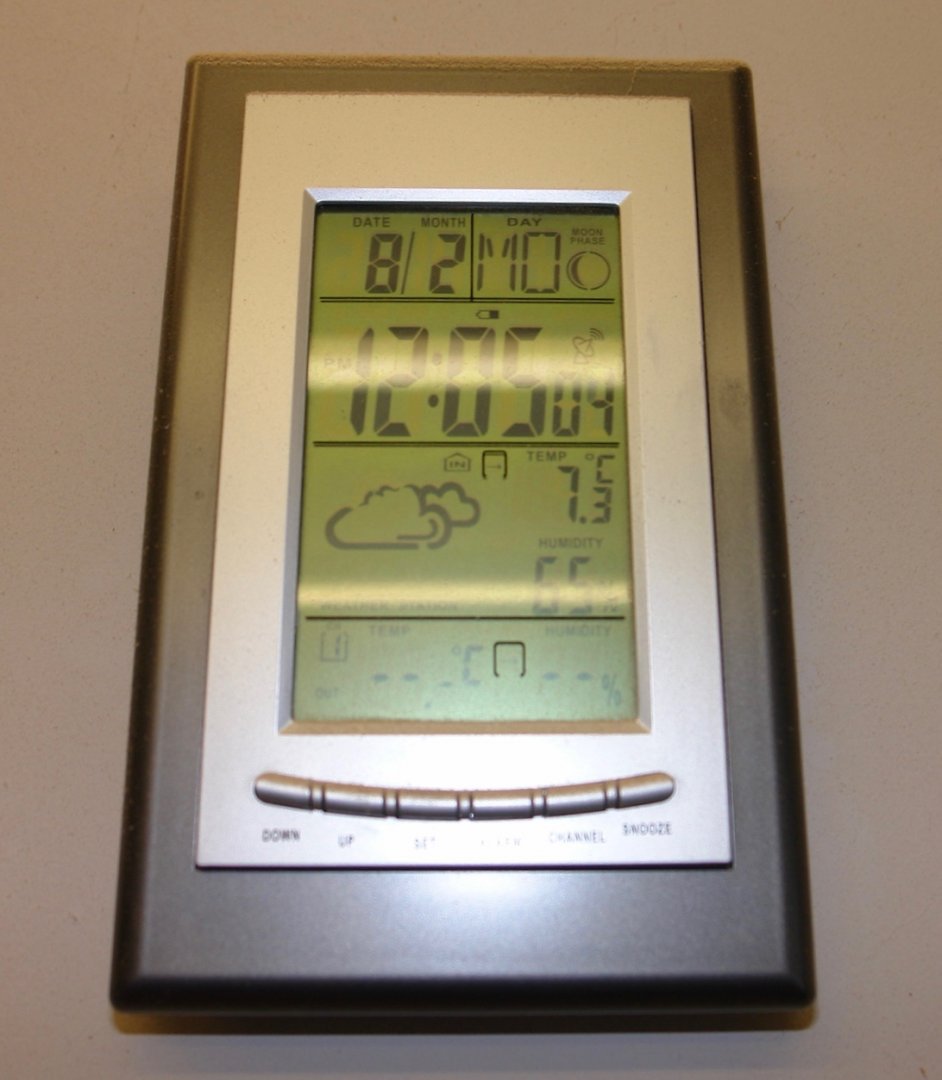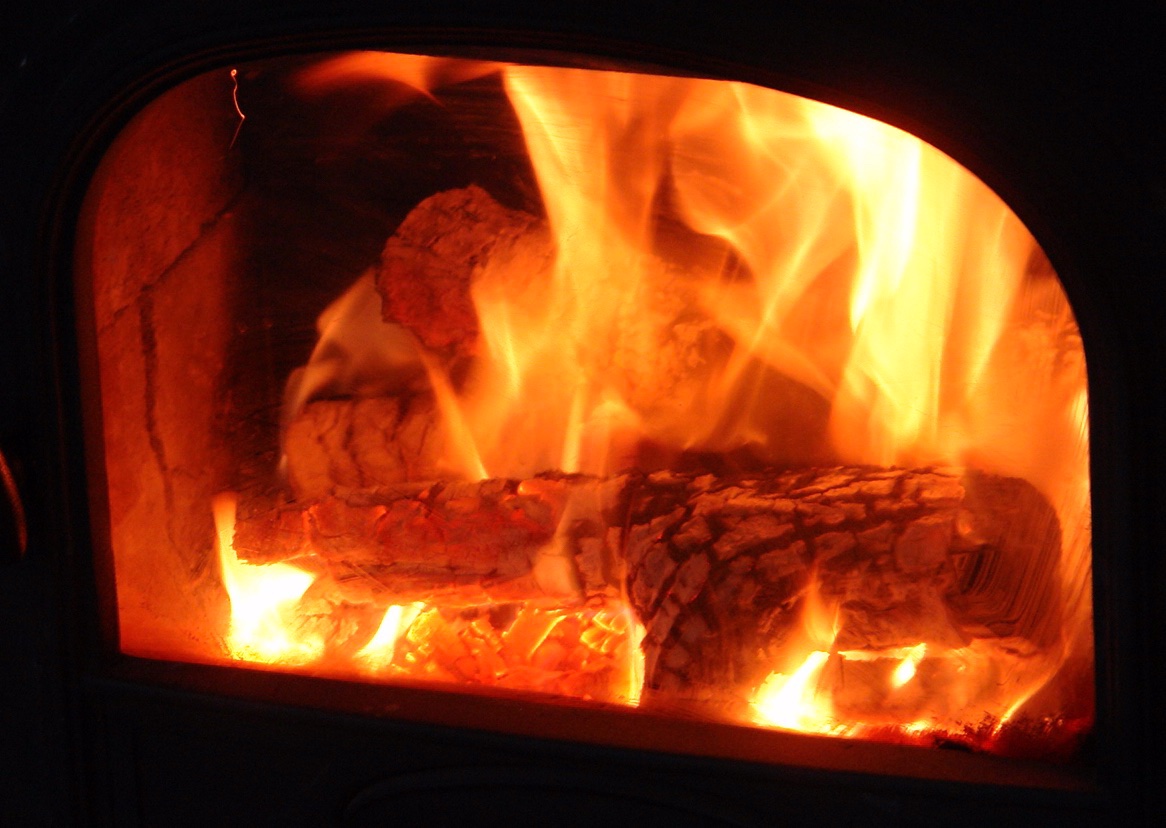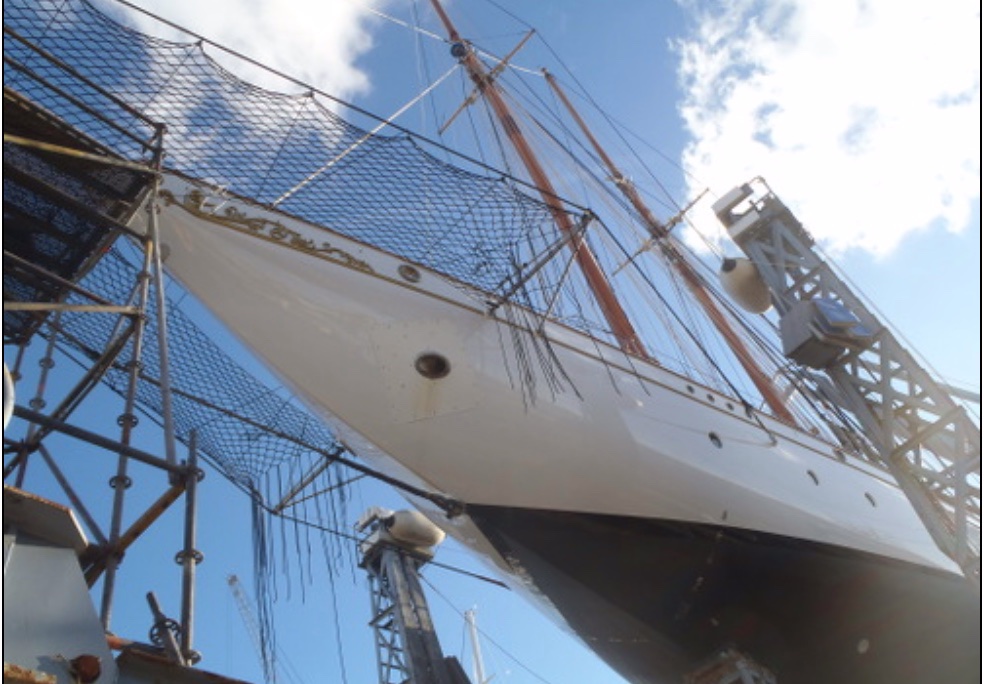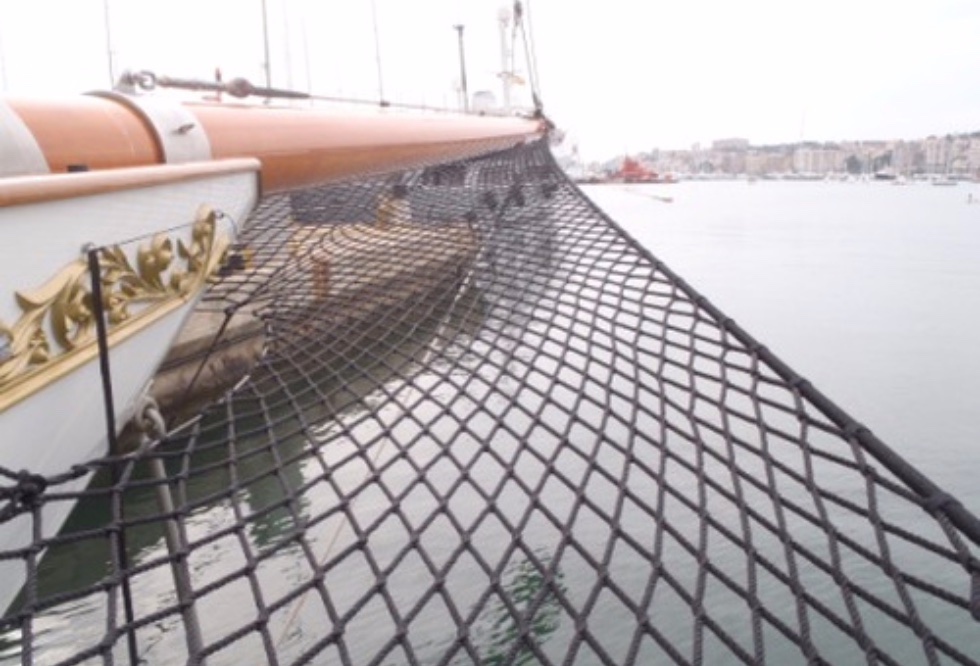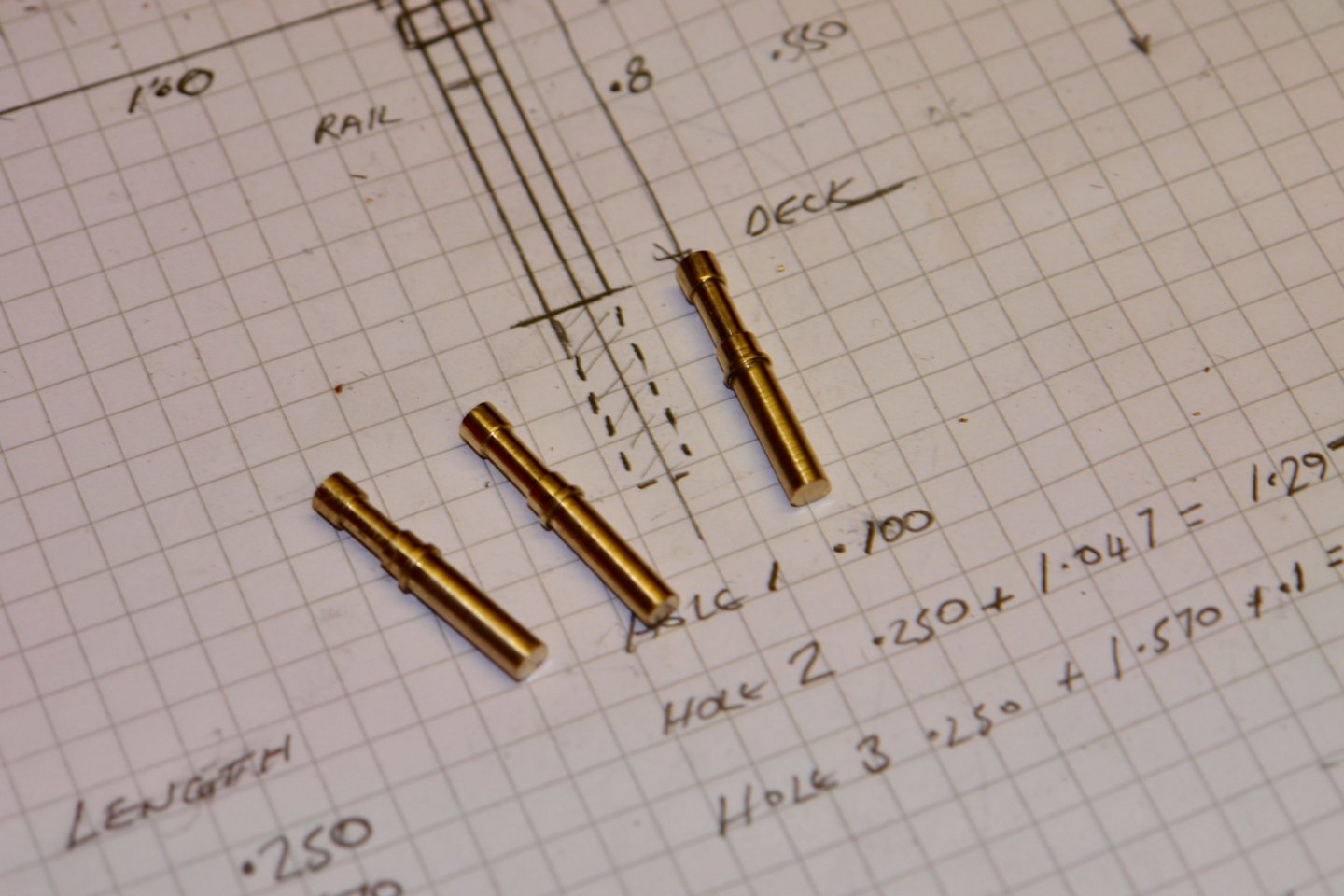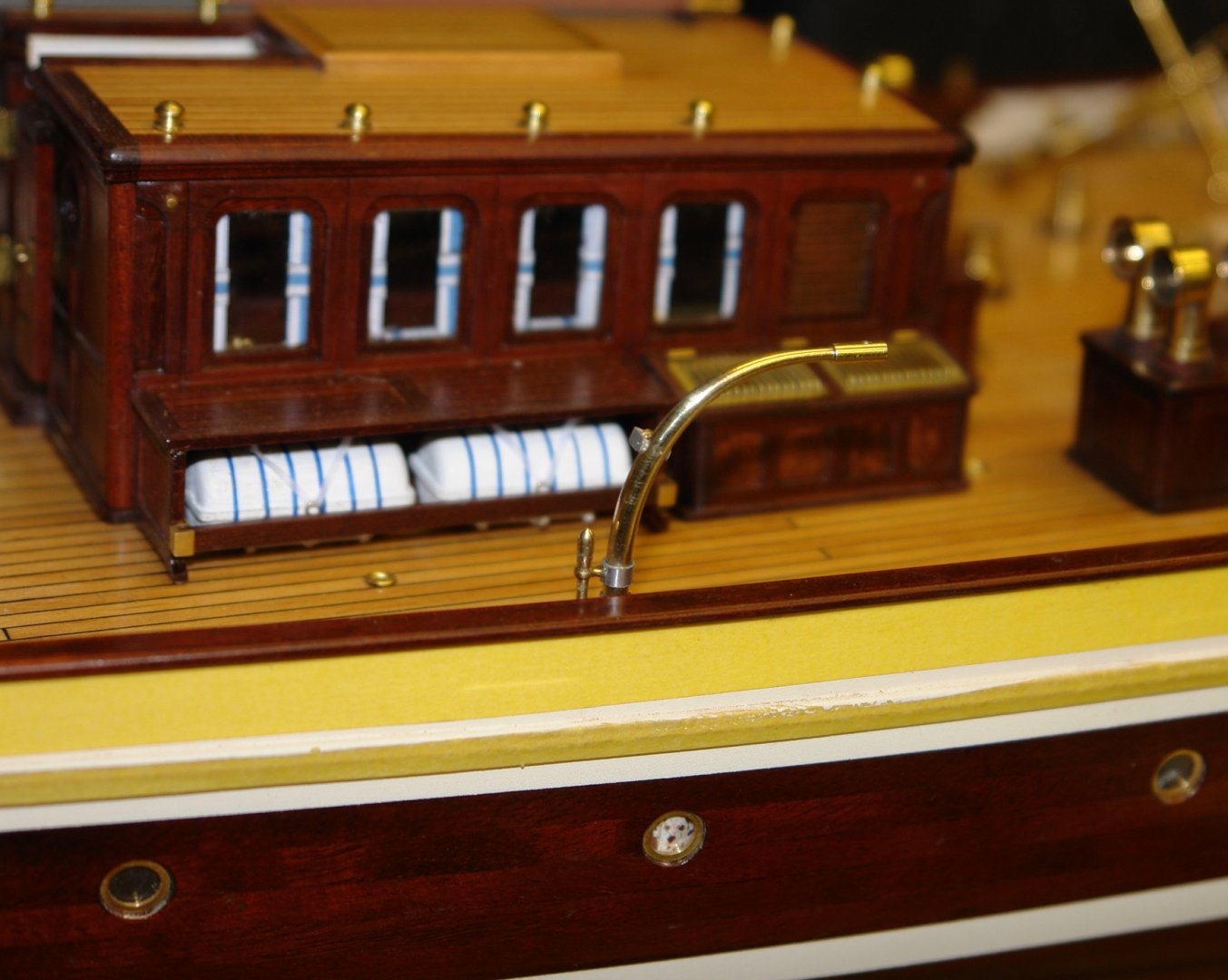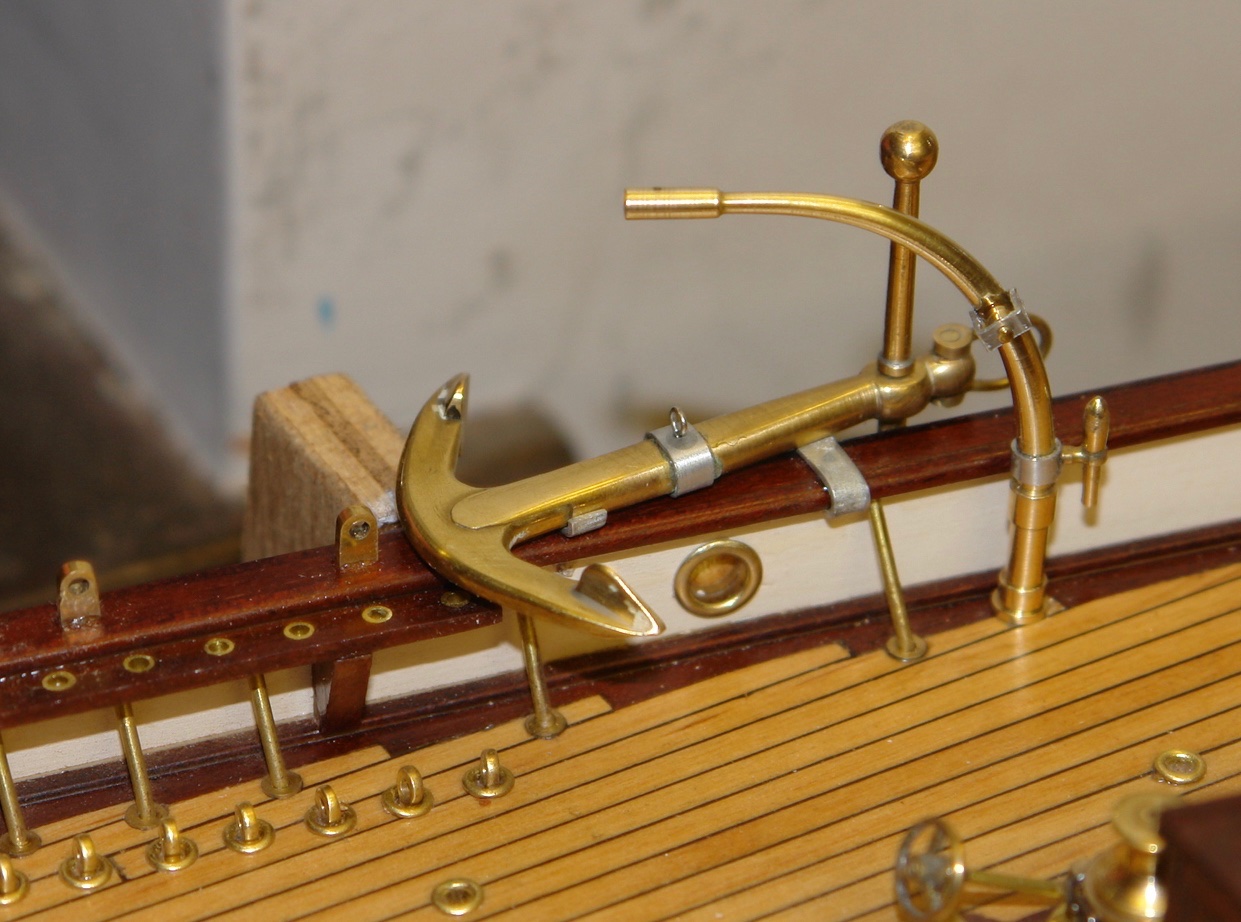-
Posts
3,946 -
Joined
-
Last visited
Content Type
Profiles
Forums
Gallery
Events
Everything posted by KeithAug
-
It has been a couple of weeks since I last posted a build update. The weather went from very cold to quite warm almost overnight prompting work on tiding the garden ready for spring. In consequence the shipbuilding suffered. I did manage to drill all the stanchions with either 2 or 3 x .025" holes depending on their purpose. A piece of a kitchen cutting board was used as a soft jaw to prevent damage. A couple of hundred holes later:- The stanchions fit into circular brass bosses on the rail. These bosses were made as brass washers from 1/8" rod. The rail needed to be drilled with .062" diameter holes to take the stanchions. The depth of drilling needed to be controlled to prevent the drill breaking through and damaging the hull. I made a stop for pressing over a 1/16" drill bit. The stanchion positions were marked out on masking tape attached to rails and then the positions were hand drilled using my home made drill press. The stanchions were a press fit in the rail so they were tapped home with a pin hammer. Once installed a .025" length of rod was passed through the stanchion top hole and the stanchion was rotated until the hole aligned with the rail. With the stanchions in place and correctly orientated a drop of CA glue was placed at the base and a washer was passed over to simulate the rail boss.
-
Interesting design of tailstock mounted steady Eberhard - i may have a go at making something which achieves the same effect. Nice detailed work as usual.
-
Mark - I liked the "struggling to control the spinnaker" looks like broaching territory to me. I look forward to the next build instalment.
-
Hi Michael, although Germania has spherical thickened sections on the stanchions a lot of modern yachts have thickened sections which are cylindrical. I prefer the aesthetics of the cylindrical design and they have the advantage of being easier to make. Without the advantage of photographic magnification it isn't very obvious anyway. Thank you Richard, I periodically look at your bluenose but she seems to have been going slowly of late. Shipyard labour problems I assume?
-
Eberhard - Thank you, I keep telling her she is developing a fan base. Keith, i don't think so. You can see from the following plan that washrooms are positioned centrally in the crew accommodation area. I think the area below the vent is for sail stowage. Presumably it is ventilated to dry stuff out. I think my wife sees me as the helpmate. In hierarchy terms I come after the dog.
-
Meanwhile the hired help is plodding on. She is complaining about the difficulties of keeping track of the bobbins. I did a rough count - she seems to have about 70 on the go and all seem to need to be operated in sequence. a bit of a knotty problem so to speak. But she is making progress. We both have our covid jabs booked for Friday - I hope your turns come soon.
-
I finished a couple of deck bits off over the weekend before commencing the manufacture of loads of stanchions. Firstly the final cowl vent went in. It is mounted on a small box structure and sits well forward on the bow. A deck board sits between the pair of skylights. I made the top solid on 4 transverse planks and then used a slitting saw to form the top planks. I counted up the stanchions and came up with a requirement of about 80. Quite a lot I thought. They are turned from 1/16 inch brass rod as per the attached sketch. I wanted to make the task as easy as possible so I created the following jig. The spaces and fillets were supposed to control the position of the cutting tool and to be fair they did. Unfortunately running the rod within the jig badly scored the un-necked part to the rod and I wasn't satisfied with the finish. Plan B involved making a "2 jaw chuck" and a tailstock support (The lathe chuck won't hold anything less than 3/32 inch diameter rod. With this set up I was able to set the distance between the new chuck and the tailstock and then use these fixed points as reference for the subsequent turning operations. Then it was just a load of repetitive manufacturing operations. Now I just have to cross drill 160 .025" holes.
-
Sad news Michael. You catch them in the corner of your eye for many years after they have gone.
- 2,214 replies
-
Thank you Geert, Eberhard, Michael, Dan. I passed your lacemaking comments on to Ann as an incentive to starting a class but she just referred me to a book and the internet. I pressed on, persuading her to show me. A bit complicated I thought "better to stick to my own knitting", so to speak.
-
Thank you Steve and Geert. I was being naughty. I did the prep work and then used my skills to convince the admiral to do the actual lacework.🤫
-
Thank you Pat and thanks to everyone for all the likes and visits. It has been pretty cold here for days. By noon on Monday the workshop temperature had struggled its way up to 7.3c (45f) After the morning in the workshop I had had enough. The draw of the lounge wood burner became overpowering. I decided I needed an armchair job so my thoughts turned to the bowsprit netting. I had previously looked at samples of window netting and fly screen netting but wasn't really satisfied with either. Making the netting seemed to be an option but I decided it would be quite a test to resurrect reluctant traditional skills. I made a card template to get the rough shape and size of the net. I used this to create a lace making template by drawing out the netting form. The next step was to accurately pick out the 1000 plus holes at the intersections of the net diamonds. This took me the best part of a day. I found a reel of mercerised black cotton which seemed appropriate for the job. This was wound on to 34 lace making bobbins. and creation of the net commenced. This job is going to go quite slowly in parallel with workshop activity. I will post an updated image of the netting as I describe parallel build progress in future posts. In the next post I will try to explain a bit about how to make lace making simple.
-
I think they must have been very fast swimmers or rowers in those days Keith. I'm assuming you discovered the ladder in your research? Did you discover its purpose?
-
Michael, The crew member looks familiar. who did you model him on?
- 2,214 replies
-

Cap San Diego by mikegr - 1/160
KeithAug replied to mikegr's topic in - Build logs for subjects built 1901 - Present Day
Superstructure is looking quite smart, nice detailed work in cutting out the windows, well done. -
Thank you Keith, Gary and Michael. I spent the weekend making the davits for the embarkation steps and for the anchor. Basically smaller versions of those previously completed but in this case neither pass through the rail. But first a better picture of one of those already made. The next two slot into up-stands which rise from the deck. The steps davit:- And the anchor davit:- Next time something completely different!!!!!!!
About us
Modelshipworld - Advancing Ship Modeling through Research
SSL Secured
Your security is important for us so this Website is SSL-Secured
NRG Mailing Address
Nautical Research Guild
237 South Lincoln Street
Westmont IL, 60559-1917
Model Ship World ® and the MSW logo are Registered Trademarks, and belong to the Nautical Research Guild (United States Patent and Trademark Office: No. 6,929,264 & No. 6,929,274, registered Dec. 20, 2022)
Helpful Links
About the NRG
If you enjoy building ship models that are historically accurate as well as beautiful, then The Nautical Research Guild (NRG) is just right for you.
The Guild is a non-profit educational organization whose mission is to “Advance Ship Modeling Through Research”. We provide support to our members in their efforts to raise the quality of their model ships.
The Nautical Research Guild has published our world-renowned quarterly magazine, The Nautical Research Journal, since 1955. The pages of the Journal are full of articles by accomplished ship modelers who show you how they create those exquisite details on their models, and by maritime historians who show you the correct details to build. The Journal is available in both print and digital editions. Go to the NRG web site (www.thenrg.org) to download a complimentary digital copy of the Journal. The NRG also publishes plan sets, books and compilations of back issues of the Journal and the former Ships in Scale and Model Ship Builder magazines.




